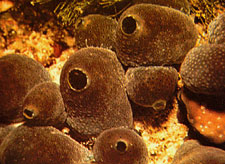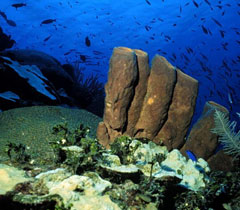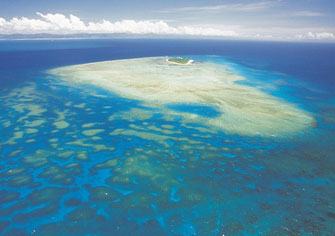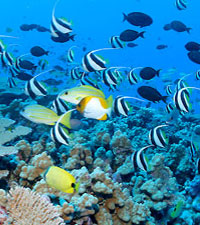Sponges & Corals
What are sponges?

Sponges are the simplest form of the multicellular organisms and all are aquatic, benthic (bottom-dwelling) organisms. It is named for the pores with which every sponge is covered, 'porifera' meaning 'pore bearer'. Most are marine, with only 150 fresh water species known today. They are known to be present in all seas and in several lakes.
Sponges come in an incredible variety of colours and an amazing array of shapes. They have thrived from their origination in the Precambrian period through to today.

They probably achieved their greatest diversity during the Cretaceous period (see Geological Time) and between 5,000 and 10,000 species live today. They have changed little in the past 600 Million years, and are found throughout the fossil record.
Although sponges are plant-like in appearance, they are in fact animals, separated early on from the rest of the Animal Kingdom. Many reef sponges resemble corals in shape and colour, but the difference is apparent on close inspection. Despite being animals, sponges are almost always stationary and have no independent mobility. They live anchored to a hard surface.
What are corals?

Corals are invertebrates that are in symbiosis with an algae or a dinoflagellate, which means they exchange nutrients and proteins with one another in order for both to survive better. To obtain food, corals filter feed.
Corals are the most important contributors to the structure of a reef. The appearance of some species of corals varies dramatically depending upon the environment.

There are two types of reefs. The first of which is referred to as a reef builder. These are corals that can be seen in the Great Barrier Reef off Australia. Reef builders build high structures composed of living and non-living materials. The living materials are most often sponges, algae, and the corals themselves. The non-living materials are most often the discarded shells of dead bivalves (clams, mussels, etc.). Coral reefs grow about a meter every one thousand years.
Then there are non reef-builders, which usually inhabits the bottom of more shallow areas of the ocean. They do not build high structures.